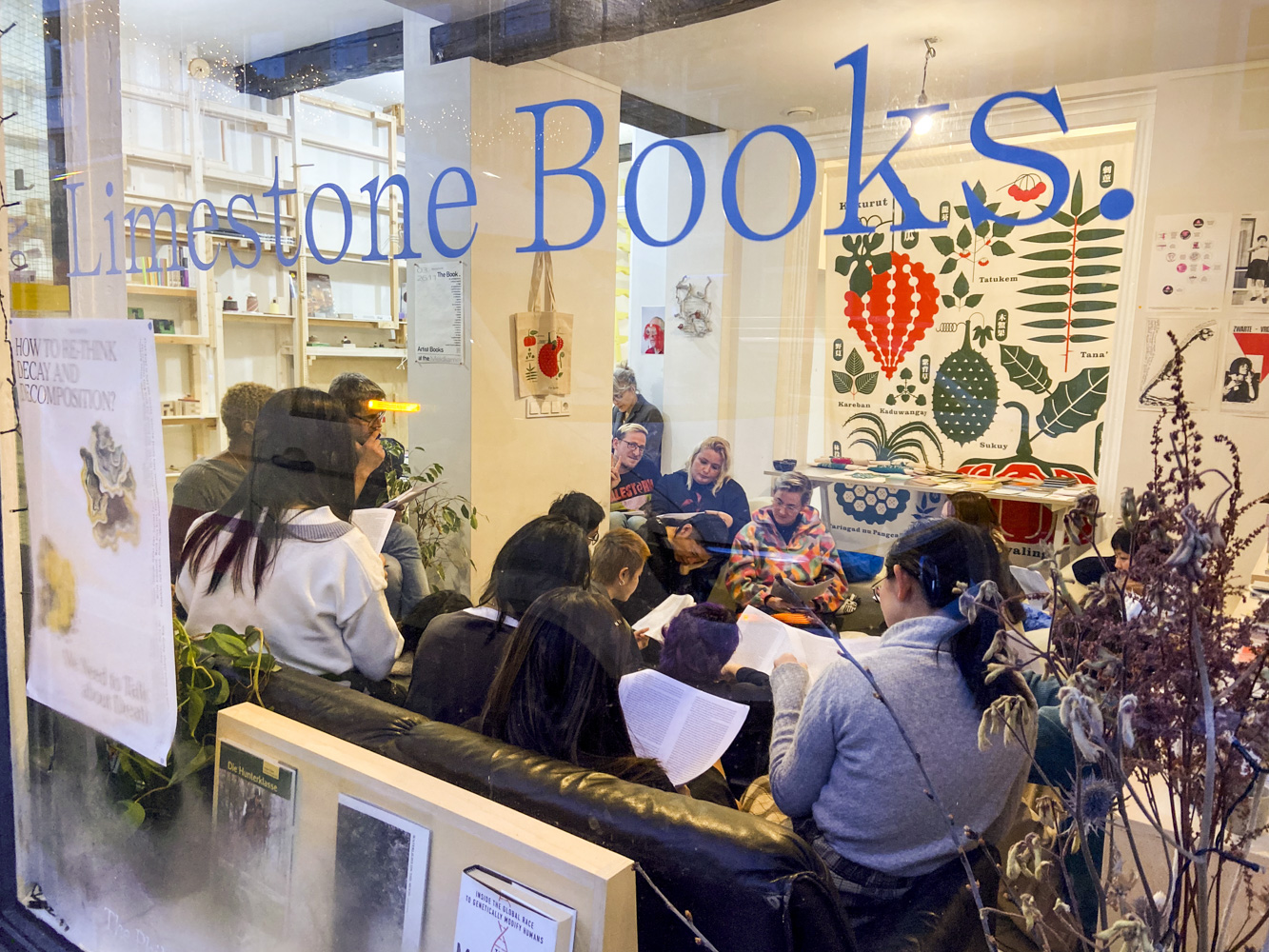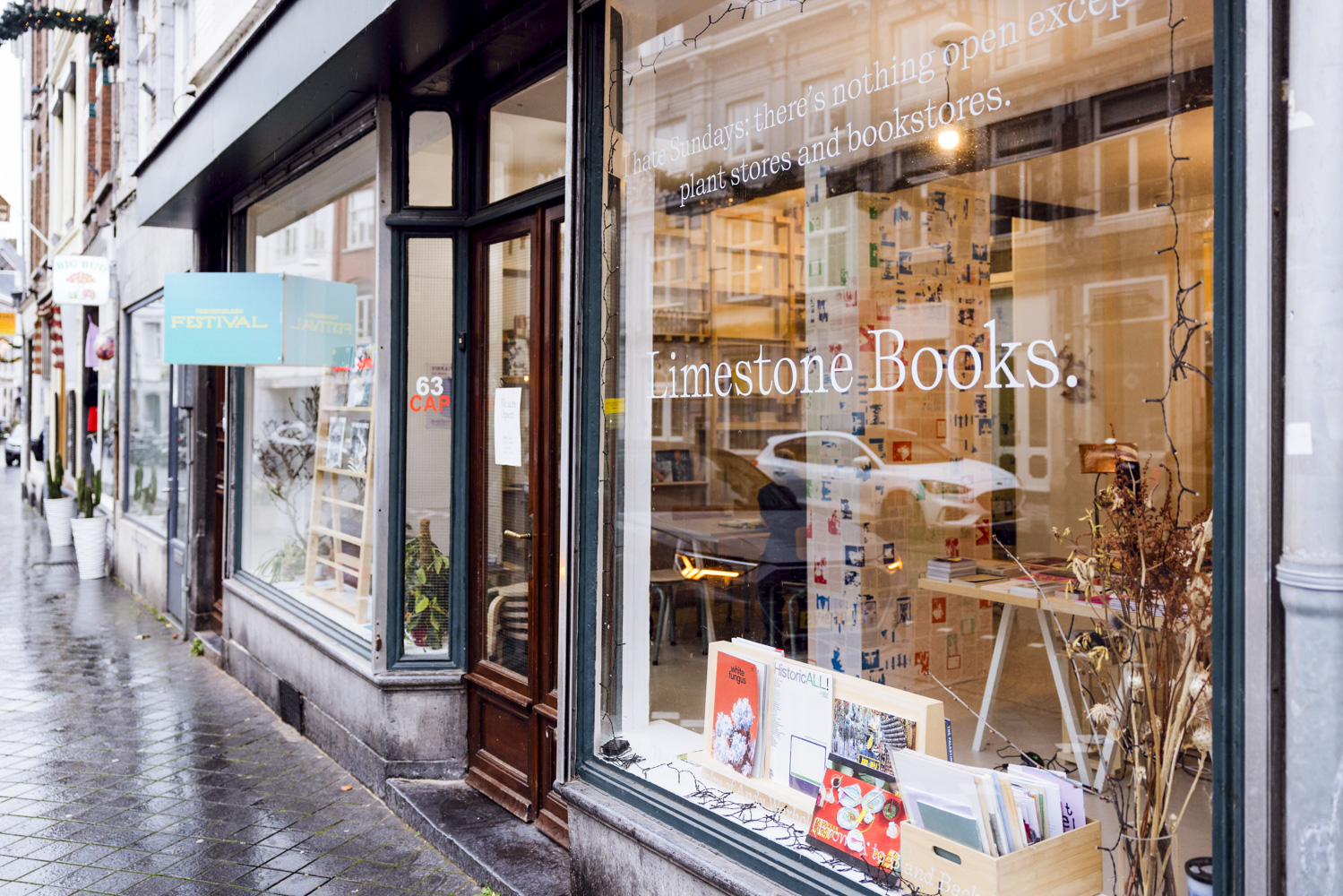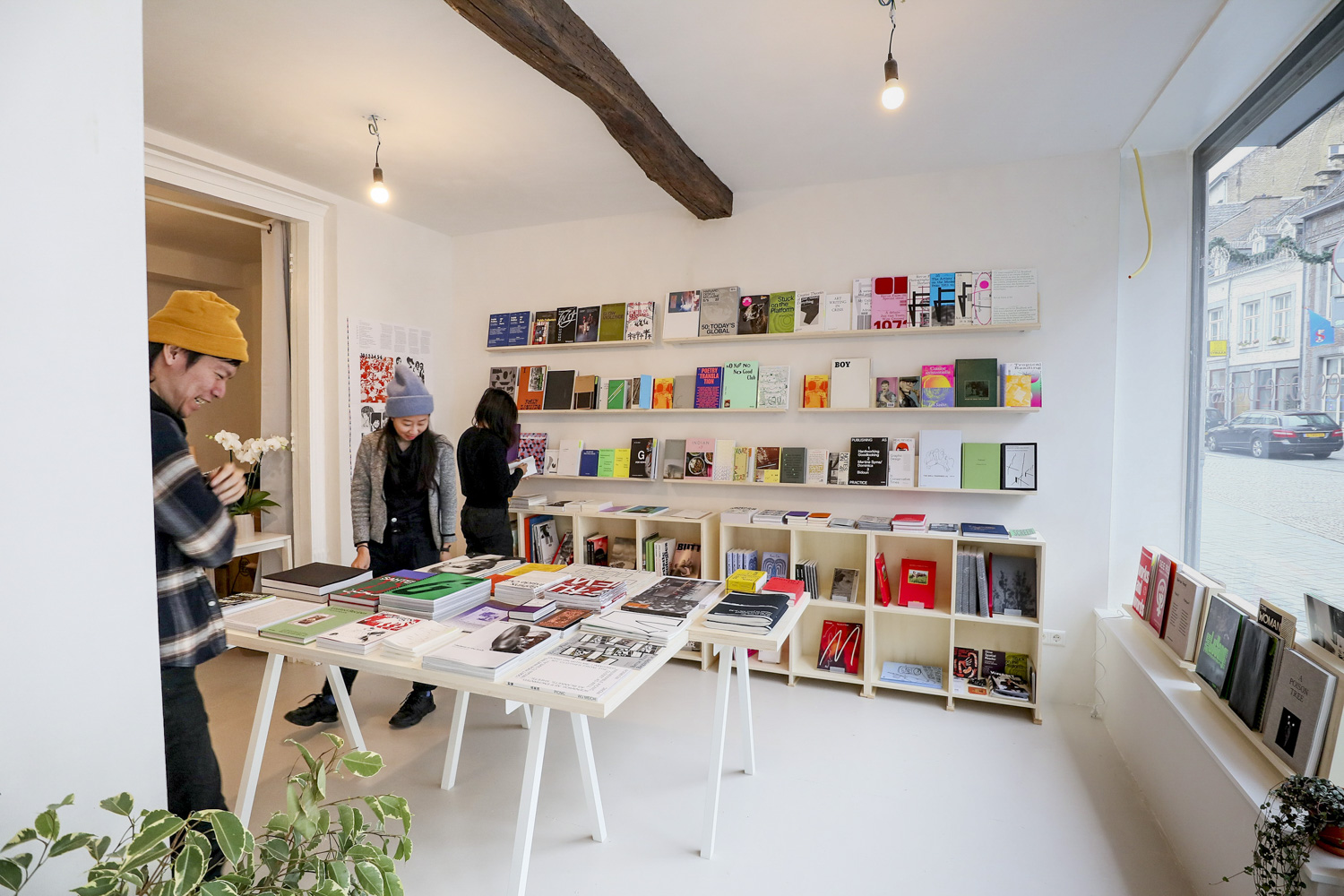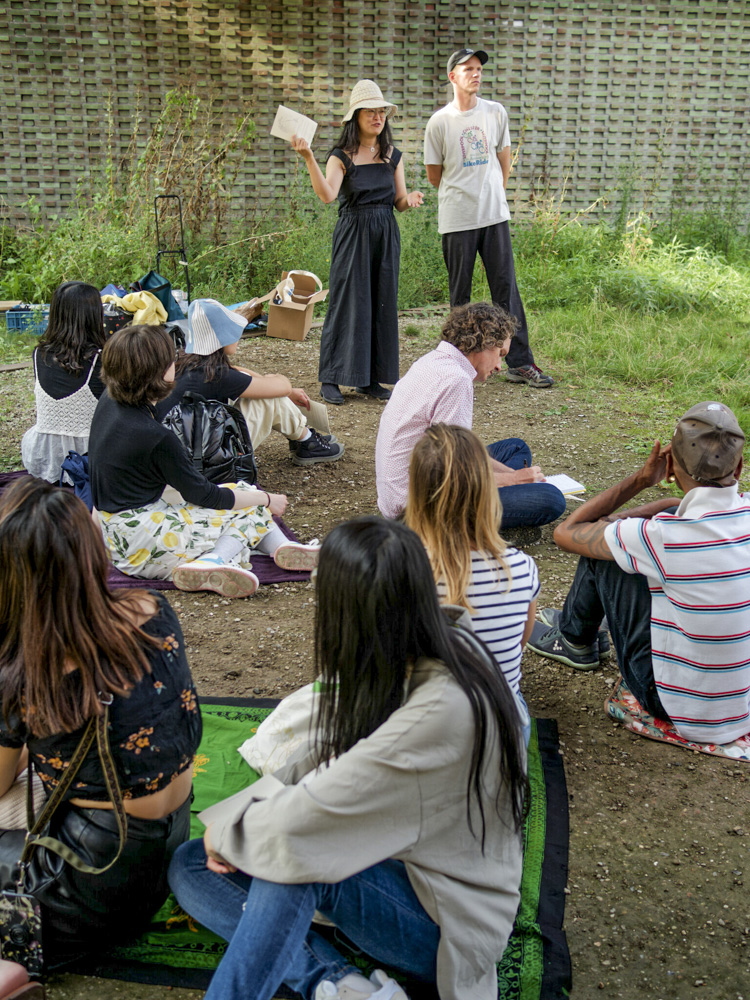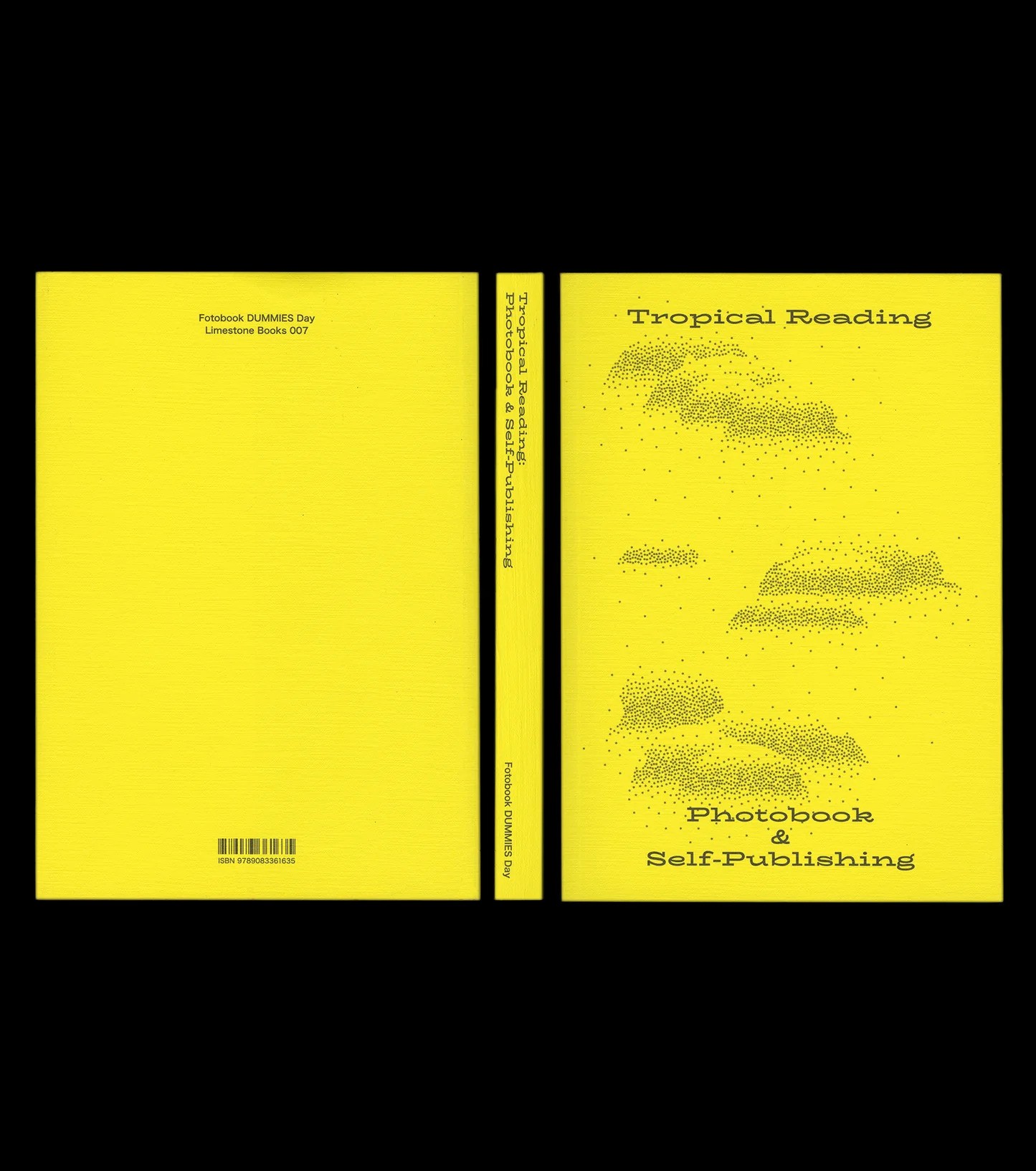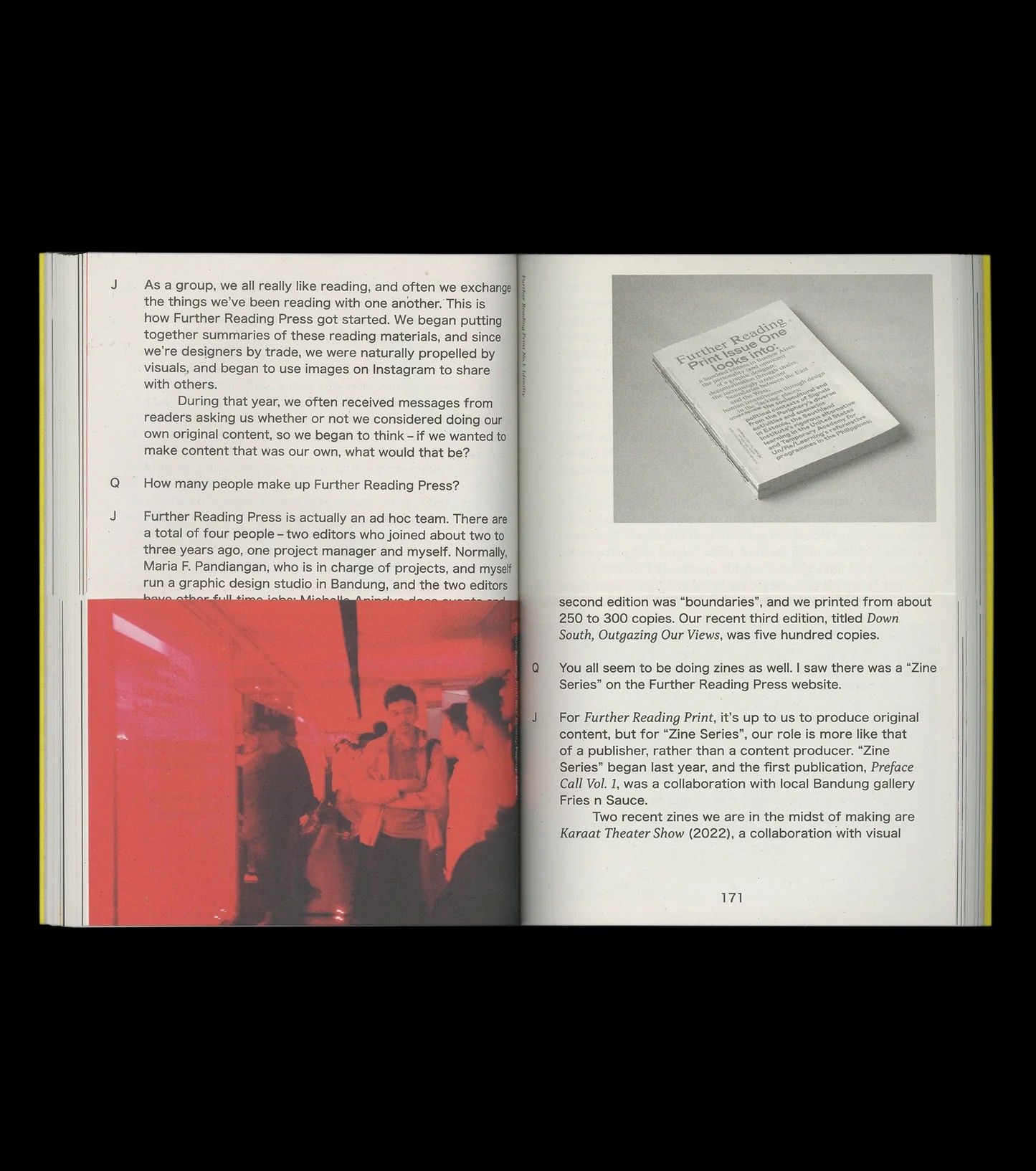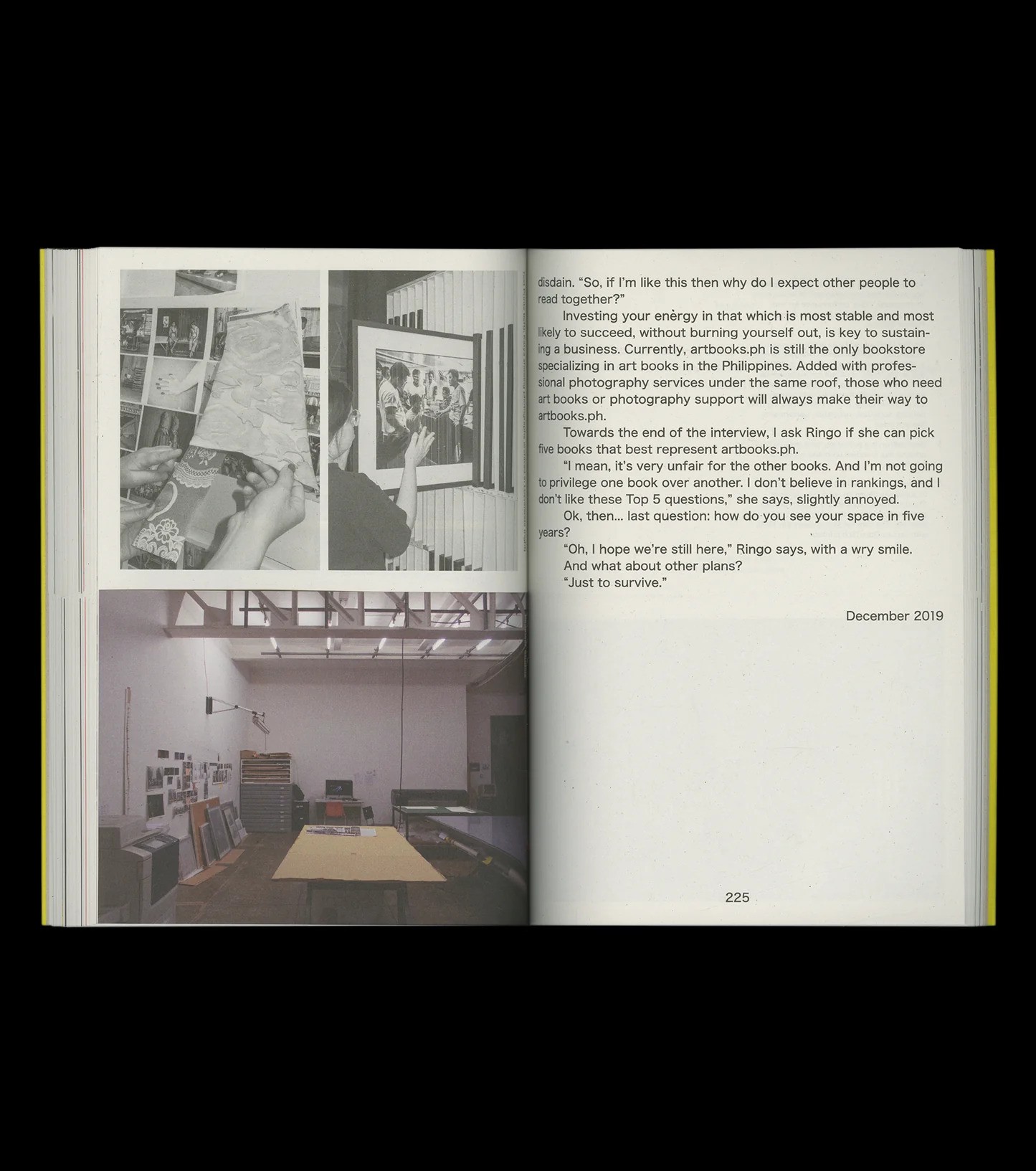Limestone Books is a bookshop in Maastricht, the Netherlands, that showcases non-Western perspectives and organises exhibitions, talks, and workshops around design and artist books. Common Imprint interviewed them to hear more about their approach to engaging with the local community and exploring possible ways of collaborating.
Please tell us briefly about Limestone Books. Normally, when we think of bookstores, they focus on selling books, but it seems like you also operate publishing house and various programs.
We are a very new collective, so we didn't intend to do so many things in the beginning. It's more like these ideas sounded fun, so we thought, why not just do it? There has been quite a bit of trial and error for us. Not everything has been an absolute success, but from all these experiences, we are learning who our audience is and what we can offer them.
What made you decide to open a bookstore in Maastricht, Netherlands? How do you engage with the local community and collaborate with Dutch and Asian publishers?
I was participating in an artist residency program at Jan Van Eyck Academie. It was a one-year program, and afterward, COVID struck. So I stayed in Maastricht for a while. That’s when I started to think about trying something different besides doing graphic design for clients. I thought it might be interesting to have a bookshop and use it as a platform to experiment with all those projects I had in mind but never had the time and space to work on. We also learned how hard it is to work with artists and publishers outside of the Netherlands because of the distance, time differences, and information gaps. So we had to think creatively about how to solve this puzzle, such as bringing the books when people are traveling or exchanging information within the network to find out what interesting things are happening and if it would be possible to bring them to Maastricht.
The programme seems to place a lot of emphasis on engaging with the local community, including Silent Reading Club and Artist Takeover inviting people who does publishing practice differently to curate the space for a certain period of time. Can you tell us about your programme and what you expect from it?
For Silent Reading Club, it was our colleague Elinice who came up with the idea. We just wanted to try it once and see how it went, and it eventually became one of my favorite events. We now hold it regularly every Thursday. Silent Reading Club has a very simple setting: you just come, bring your own book, find a spot, and read. It is simple but very powerful because it creates the most intimate and straightforward relationship between an author and a reader. Afterward, people spontaneously talk about the book they just read. We are amazed at the wide range of genres people are reading in the same room and how these can spark interesting conversations.
We have a recurring project called Artist Takeover, where we invite artists to take over the bookshop, becoming the owner of the shop for a short period of time. The artists can use the space and books as materials to express their ideas. The point is to create a new relationship between the artists and their audience (our community). Because we are a bookshop, not a gallery or museum, the environment is less formal and more integrated with everyday life. A bookshop is in the neighborhood, and you can simply walk in every day. There is always noise and people walking by, but visitors feel more at home while interacting with the artists. Art can happen in everyday life, and I think it can be realized in our shop.
As a different kind of collaboration, the book Tropical Reading by Taiwan’s publisher Photobook DUMMIES Day has been redesigned and republished. This book is about photobooks and self-publishing in Asia. In addition, the production and design of the published book have changed a lot. What were the reasons behind the republishing?
My initial idea, probably the same as many booksellers in the Netherlands, was to have more non-Western publications in the shop. You can find European art books in Asia, but rarely the other way around. I found Photobook DUMMIES Day's research super interesting and felt it hasn't been discussed enough in a European context. So that's why we decided to republish it. The design of the first edition is really nice and interesting; we all like it very much.
On the other hand, in the context of the Netherlands, I wanted to reach readers who will bring the book on the train, and read along the way. I wanted a book that is easy to carry and easily accepted by libraries. So we made the book a more humble and simple book-book object. However, we wanted to keep elements of the original design as a response. That's why we have some half-page spreads within the pages.
What are your criteria or themes, if any, for the books you feature and distribute?
It's pretty much instinctive. I choose books that I like, find interesting, and would want to read or own myself. Within our collective, all the members come from different disciplines, and I fully trust their recommendations. I also consider our community in Maastricht, paying attention to what they are talking about and what they care about. So it's never just about me; the collection is influenced and shaped by the people around us.
There have been recent initiatives to bring Asian art books to Europe in diverse ways. And spaces like Limestone Books can be an important alternative. Do you have any strategies of your own or what possibilities do you see?
I see us as a portal in the network connecting different parts of the world. Not only between the West and the East, but also including any underrepresented voices in Europe. Our strategy is to be open and flexible, allowing different kinds of voices to be heard.
Could you briefly explain the tendency for publications produced and circulating independently in Asia how to be received by your local community?
It was satisfying to see that some customers simply like the books from non-Western perspectives as much as the other books. The language can be a barrier, and some books need to wait for a while until the right customers find them. But that is fine. The point is to allow all kinds of books to be seen in the same place so that customers can be surprised by exploring the collection.
Tell us about your future plans.
We like to build a strong connection with publishers and artists from outside the Western context and, through collaboration, develop more publishing and distribution possibilities.
